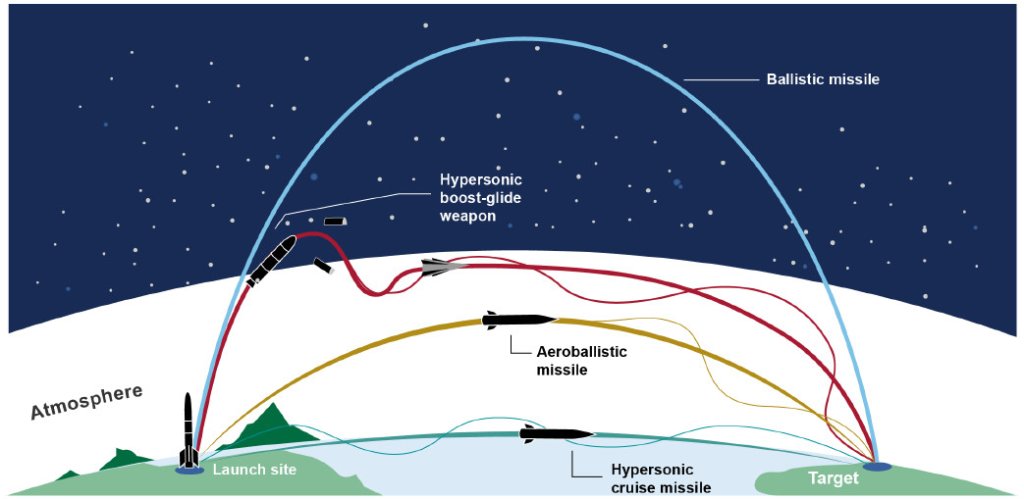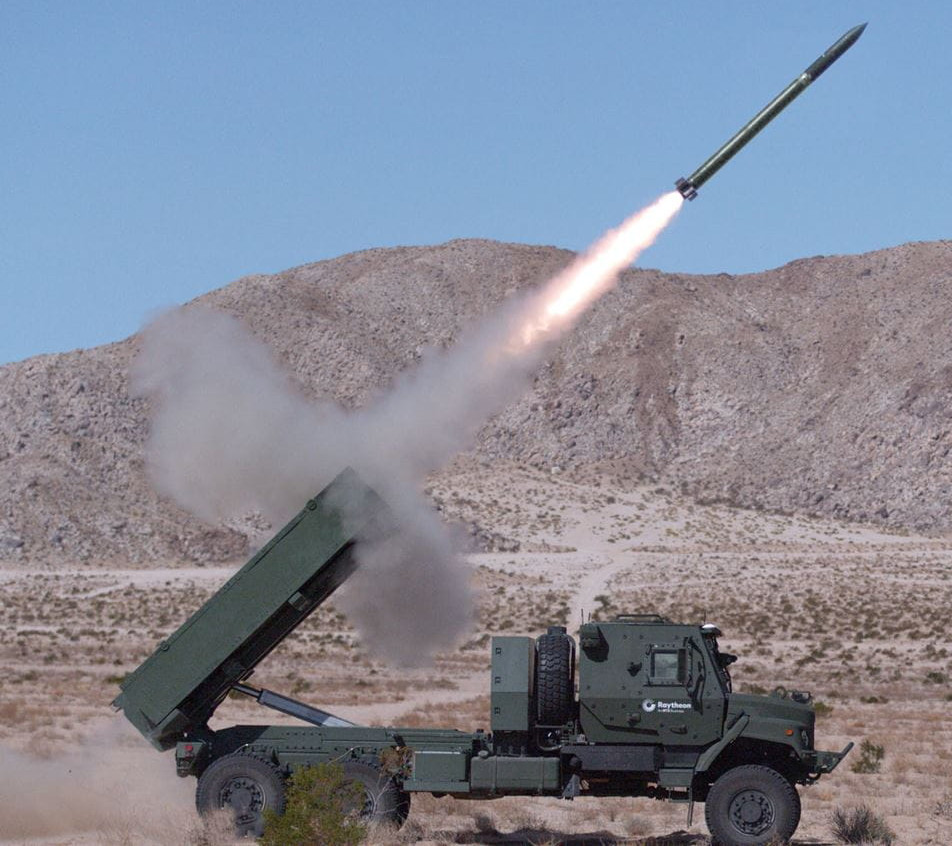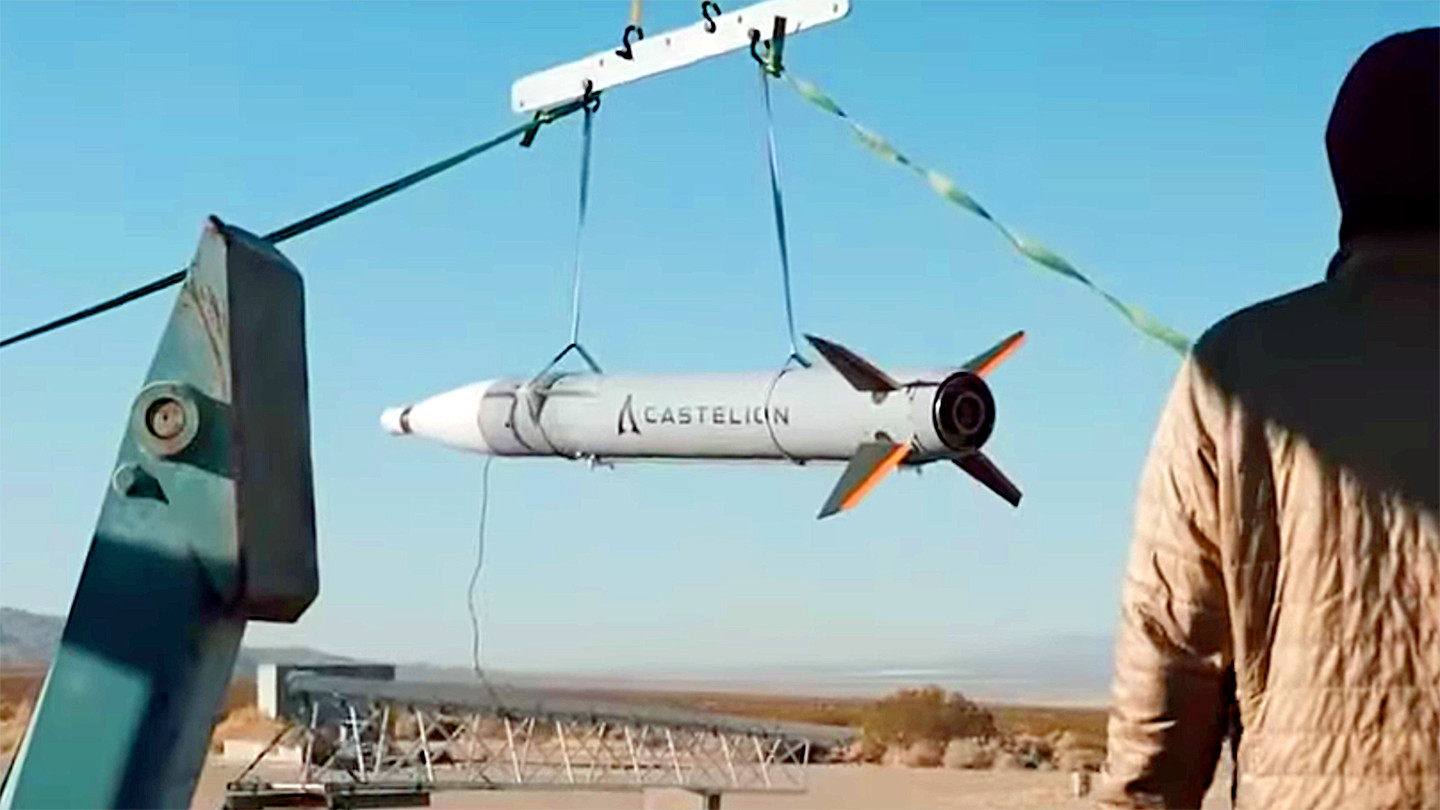The U.S. Army wants to see if a startup founded three years ago by former SpaceX employees can deliver a lower-cost ground-launched missile, dubbed Blackbeard, capable of engaging targets hundreds of miles away at hypersonic speeds. The weapon is being developed in parallel with new uncrewed launcher vehicles, but could also be fired from M142 High Mobility Artillery Rocket System (HIMARS) launchers. With a viable Blackbeard design from the Castelion Corporation, the Army says it would gain a valuable new way to quickly strike targets, including time-sensitive ones on the move, and do so relatively cheaply.
In its proposed budget for the 2026 Fiscal Year, the Army is asking for $25 million to support work on the Blackbeard Ground Launch (Blackbeard GL) effort. The funding request is somewhat confusingly contained in a line item that has been used for elements of the Dark Eagle Long Range Hypersonic Weapons (LRHW), as well as HIMARS Extended Range Demostration (HERD) work, in the past.

“As of June 2025, the program office is pursuing a Middle Tier of Acquisition for Rapid Prototyping (MTA-RP) pathway, with the goal of transitioning the system to Program Executive Office Missile and Space if successful and deemed cost-effective,” the Army’s Fiscal Year 2026 budget request explains. “To accelerate development and leverage innovation, the program office is pursuing acquisition under a Fixed-Firm-Price (FFP) sole-source Other Transaction Authority for Prototyping (OTAP) with Castelion Corporation, a non-traditional defense contractor.”
Castelion was founded in 2022 by a trio of individuals who left space launch and services giant SpaceX to form their own company, which is focused on the development of high-speed, but also relatively low-cost and readily producible strike weapons. As of January, the company had raised more than $100 million in funding from private investors and had secured tens of millions more in U.S. military contracts, according to The Wall Street Journal. Those contracts are something we will come back to later on.
“The mission of Blackbeard Ground Launch (GL) is to attack/neutralize/suppress/destroy using hypersonic missile delivered precision fires (seeker based) against time sensitive moving targets and hardened targets at a much-reduced cost per missile than currently exists in the Army inventory,” according to the Army’s proposed budget for the 2026 Fiscal Year. “Blackbeard Ground Launch (GL) is an affordable, mass-produced hypersonic weapon designed for mid-range precision. The Army will leverage advancements in technology, materials, and cost-effective production methods to provide superior capabilities through fast, iterative design cycles, flexible hardware development, and modern manufacturing practices.”
“Blackbeard GL is not a replacement to [sic] the Long Range Hypersonic Weapons (LRHW) as it will not reach similar velocities nor range,” the line item also makes clear. “The goal of Blackbeard GL is to deliver approximately 80% of the Precision Strike Missile (PrSM) Increment 4 capability at a significantly reduced cost.”
PrSM is a short-range ballistic missile. The Army is in the process of fielding the baseline Increment 1 version now, which can be fired from both wheeled M142 HIMARS and tracked M270 Multiple Launch Rocket System (MLRS) launcher vehicles. The Increment 2 missile, which is in development now, features a new dual-mode seeker system that allows for the engagement of moving targets on land or at sea. Increment 3 is focused on new “enhanced” payloads, which might include small precision-guided glide bombs or kamikaze drones. Increment 4 seeks to increase PrSM’s range from 310 miles (500 kilometers) to 620 miles (1,000 kilometers), and could include the addition of a ramjet or some other form of air-breathing propulsion.

At least in terms of range, a Blackbeard missile offering 80% percent of the capability of an Increment 4 PrSM could therefore be able to reach targets out to just under 500 miles (800 kilometers).
Hypersonic speed is also typically defined as anything above Mach 5, which would then be the minimum peak velocity for the Blackbeard missile. It is important to note here that traditional ballistic missiles travel at very high speeds, with many types often exceeding the hypersonic threshold in the terminal phase of flight. However, the term “hypersonic missile” generally refers to weapons designed for sustained hypersonic speed across a far shallower and even maneuvering trajectory. This can include missiles that release unpowered hypersonic boost-glide vehicles, like the aforementioned Dark Eagle, as well as air-breathing hypersonic cruise missiles. Exactly how Blackbeard is expected to be “hypersonic” is unclear.

What kind of unit cost the Army is eying for Blackbeard is unknown. PrSM Increment 4 is still very much in the conceptual stage, so there is no price point there to compare against. Per its latest budget request, the Army is now paying around $1.6 million for each Increment 1 PrSM, but is also spending some $5.35 million per Increment 2 missile with the new guidance package.
TWZ has reached out to the Army and Castelion for more information.
Castelion has already conducted numerous launches to date of test articles with different designs, which could reflect multiple concepts under development. They all look, at least in very broad strokes externally, like small ballistic missiles. Some of the company’s experimental designs also look to feature tail sections that are at least heavily inspired by, if not lifted directly from Standard-series surface-to-air missiles still in service with the U.S. Navy and other navies globally.


The U.S. Navy and the U.S. Air Force have awarded Castelion contracts for work related to long-range strike weapon concepts in the past. The company has also said previously that it is aiming to have a more finalized design by 2027. The Air Force connection may also help explain the apparent existence of an air-launched design that the Army plans to use as the basis for the first phase of the Blackbeard project.
Phase 1 “will deliver a prototype proof-of-concept, including a fixed-fin flight demonstration of the existing air-launched, extended-range Blackbeard design from a modified Government Furnished Equipment (GFE) Multiple Launch Rocket System Family of Munitions (MFOM) pod,” according to the Army’s latest budget proposal. “Following the demonstration, Blackbeard-GL Minimum Viable Product (MVP) prototypes will be fabricated alongside a custom Blackbeard-GL launcher pod, culminating in an MVP flight test launched from the M142 HIMARS Fire Control system.”
All current munitions for the M142 HIMARS and M270 MLRS come in standardized MFOM pods. The pods can each hold six 227mm guided artillery rockets, a single Army Tactical Missile System (ATACMS) short-range ballistic missile, or two PrSMs. It’s unclear how many Blackbeards the Army expects to fit inside the standard pod architecture.

“If Phase 1 is successful, this option will be exercised to develop and demonstrate the full capability of a production-representative weapon,” according to the Army’s budget documents. “This includes delivering 10 missiles integrated into the M142 HIMARS launcher platform and fire control system, as well as integrating a Flight Termination System (FTS).”
A munition that would allow a HIMARS launcher to precisely engage stationary or moving targets 800 miles in any direction from where it is located, and do so very quickly and at relatively low cost, would be a major boost in capability. Even just with a hypersonic peak speed, Blackbeard would offer additional flexibility against pop-up threats and otherwise present additional challenges for enemy forces.
As mentioned at the start of this story, the Army says that Blackbeard is also a direct companion to work on new uncrewed launcher vehicles capable of firing munitions from MFOM pods, as well as bespoke canisters. The service is currently looking toward a future that could include a potential family of so-called Common Autonomous Multi-Domain Launchers (CAML) of various sizes. It has already tested an uncrewed derivative of the HIMARS, as well as a separate design from Raytheon.


Castelion has been using launchers loaded on 10×10 Oshkosh MKR18 Logistics Vehicle System Replacement (LVSR) trucks, as well as static launchers on the ground, during its testing.
In general, uncrewed launchers would help the service expand its overall rocket artillery and ballistic missile launch capacity without the need for significantly larger numbers of personnel. The launchers could also be employed with less risk to human operators, even when pushed further forward. This could be a particularly potent combination when paired with Blackbeard’s range and other capabilities.
Beyond the operational capabilities it might offer, Blackbeard represents a steadily growing U.S. military-wide interest in lower-cost precision munitions that are also relatively easy to produce, as well as leveraging non-traditional defense contractors to develop and build them. This is widely seen as vital for bolstering stockpiles in an economically viable way ahead of a major contingency, such as a large-scale conflict in the Pacific against China, and keeping adequate supplies of those weapons flowing in the event of a drawn-out fight.
On top of all this, hypersonic weapons have historically been notoriously complex and expensive, which in turn limits their potential impact in future operations. At the same time, the U.S. military has consistently touted the importance of hypersonic capabilities to success in future conflicts, especially against global competitors like China.
“I think the types of sensing capability that quantum sensing is going to deliver, the cross domain sensing opportunities from space to air, for example,” and “the sophistication of sensor fusion and track using AI [artificial intelligence] and other techniques – I don’t think we’re going to be able to hide in any operational sense, in a realistic way,” Rob McHenry, deputy director of the Defense Advanced Research Projects Agency (DARPA), warned during an online talk hosted by the Air and Space Forces Association’s (AFA) Mitchell Institute for Aerospace Studies last week. McHenry had also explicitly posited whether the “stealth era” might be coming to an end.
“And so what are the implications of that? You know, if you look historically, there are things like using speed and maneuverability,” he added.

The U.S. military is also trying to improve its contracting processes to manage risks differently to encourage innovation while avoiding sinking significant resources into efforts that ultimately don’t provide useful results. The “phased approach provides the Army with a clear ‘off-ramp’ should the technology prove immature, ensuring responsible stewardship of taxpayer dollars,” the line item for Blackbeard in the service’s latest budget request makes clear.
Whether the Blackbeard missile project delivers on its promise or not, it could serve as a model for future Army munition development efforts.
Update: 7/1/2025 –
In response to our queries, Castelion has now told TWZ that the designs seen in the imagery it has released to date show “are
representative of the low-cost internally developed test vehicles we use to enable rapid subsystem design iteration and to ground our performance models in real-world test data.”
“Castelion’s approach to development focuses on getting into hardware-in-the-loop and flight testing early in development to support learning cycles across design, production, and test,” the company added. “As such, flight vehicles shown on social media are not representative nor intended to be representative of our final weapon systems.”
Contact the author: joe@twz.com
